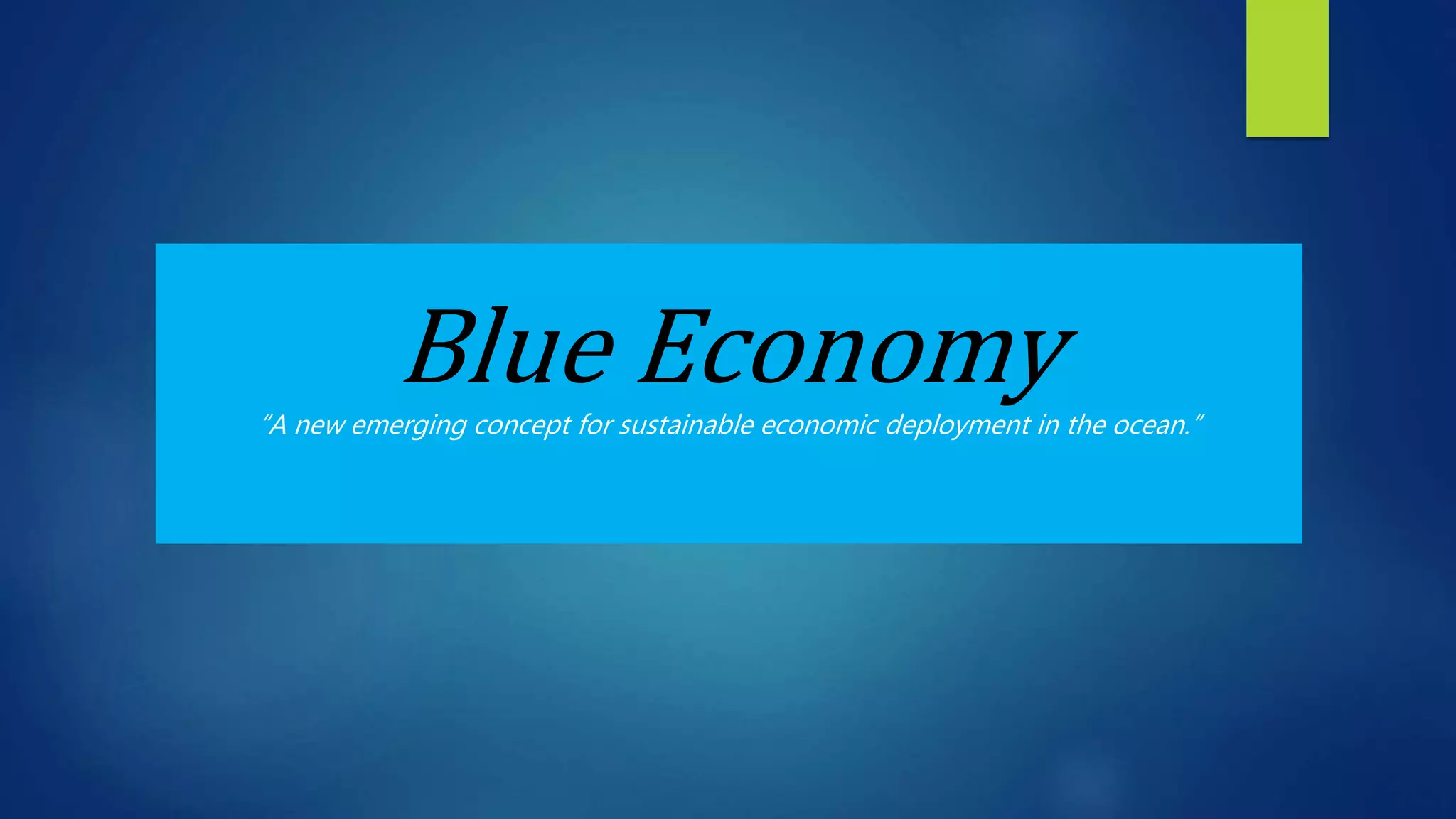The document discusses the concept of a "Blue Economy" which aims to promote sustainable economic growth through the utilization of ocean resources. It describes how oceans are essential to supporting life and the global economy. The Blue Economy framework balances conservation with sustainable use and private sector growth with equitable community benefits. It also aims to unite management of ocean areas within countries' exclusive economic zones with areas beyond national jurisdiction. Realizing the full potential of the Blue Economy could help address challenges like food security and climate change.





























